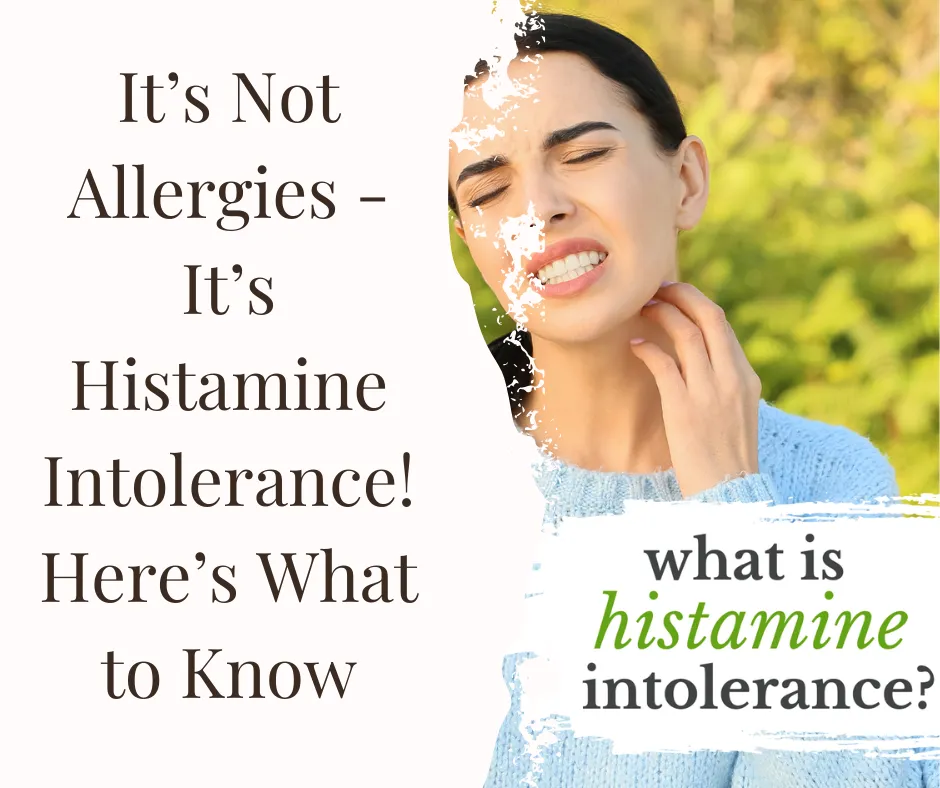
Histamine Intolerance: The Hidden Cause of Your Mystery Symptoms
Histamine Intolerance: The Hidden Cause of Your Mystery Symptoms
If you’ve ever felt like your body is playing a cruel game of ‘guess what’s wrong now,’ you’re not alone. One day, it’s a pounding headache; the next, your skin is breaking out in hives, or your stomach is in knots after a meal you’ve eaten a hundred times before. Maybe you’ve been told it’s stress, allergies, or even ‘just in your head.’ But what if there’s a deeper reason for these seemingly random symptoms? Histamine intolerance is often overlooked, yet it could be the missing link behind your body’s unexplained reactions. Let’s break it down and figure out what’s really going on
What is Histamine Intolerance?
Symptoms of Histamine Intolerance
● Skin Reactions: Flushing, hives, itching, and eczema-like rashes
● Digestive Issues: Bloating, diarrhea, nausea, and acid reflux
● Neurological Symptoms: Headaches, migraines, dizziness, and anxiety
● Cardiovascular Effects: Palpitations, low blood pressure, and irregular heartbeat
● Respiratory Symptoms: Nasal congestion, sneezing, and difficulty breathing
● Hormonal and Menstrual Irregularities: Worsened PMS, irregular cycles, and hot flashes
Why is Histamine Intolerance Often Misdiagnosed?
Triggers and Contributing Factors
Several factors can contribute to histamine intolerance, including:
● Gut Health Imbalances: A healthy gut microbiome is essential for proper histamine metabolism. Dysbiosis, leaky gut, and small intestinal bacterial overgrowth (SIBO) can impair DAO production and lead to histamine buildup.
● Nutrient Deficiencies: DAO enzyme function depends on certain nutrients, particularly vitamin B6, copper, and vitamin C. Deficiencies in these nutrients can exacerbate histamine intolerance.
● Hormonal Fluctuations: Estrogen can promote histamine release, which is why some women notice worsening symptoms around ovulation or during PMS.
● High-Histamine Foods: Aged cheeses, fermented foods, alcohol, processed meats, and certain vegetables like tomatoes and spinach are naturally high in histamine and can contribute to symptoms.
● Medications: Some medications, including NSAIDs, antidepressants, and antihistamines, can interfere with DAO activity and histamine breakdown.
Testing for a Proper Diagnosis
Some practitioners may also use a histamine skin prick test to detect elevated levels.
A Whole-Body Approach to Managing Histamine Intolerance
1. Supporting Gut Health
Since DAO is produced in the gut, improving gut health is a crucial step. Strategies include:
● Healing the Gut Lining: Consuming bone broth, collagen, and glutamine can help repair intestinal permeability (leaky gut), which is often a contributor to histamine intolerance.
● Balancing the Microbiome: Introducing probiotics that do not produce histamine, such as Lactobacillus rhamnosus and Bifidobacterium infantis, can support gut balance without exacerbating symptoms.
● Addressing SIBO and Dysbiosis: If an overgrowth of bacteria is present, antimicrobial herbs, probiotics, and a temporary low-histamine diet may help rebalance the gut.
2. Optimizing DAO Activity and Nutrient Levels
Ensuring adequate levels of nutrients that support DAO function is essential. These include:
● Vitamin B6: Found in poultry, bananas, and potatoes, B6 is crucial for DAO production.
● Vitamin C: Acts as a natural antihistamine and supports immune function.
● Copper: Helps activate DAO and is found in nuts, seeds, and organ meats.
● Quercetin: A flavonoid with mast cell-stabilizing properties that can help reduce histamine release.
3. Adopting a Low-Histamine Diet Temporarily
4. Reducing Stress and Supporting Detoxification
https://www.rupahealth.com/post/a-functional-medicine-approach-to-histamine-intolerance
